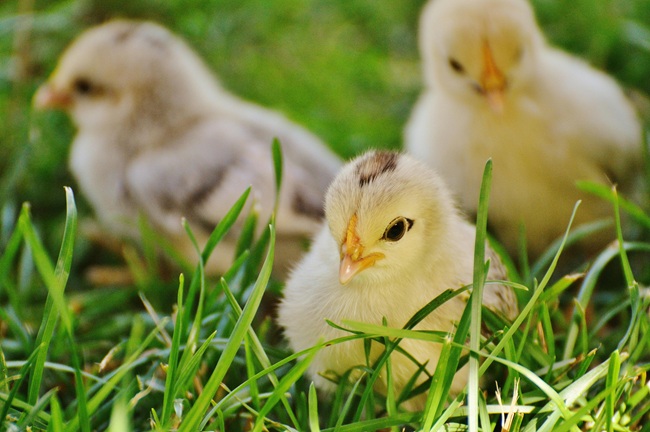
Many people only want hens for eggs or do not want the noise that comes with a rooster, so pullets are ordered. However, sexing chicks is very hard to do with most breeds. Hatcheries employ professional chicken sexers. They use vent sexing (squeezing them to make them poo and then observing whether they have a ‘bump’ inside their vent – bump = male, no bump = female), but some females do have small bumps, so even with a professional sexer most hatcheries will only guarantee a sexing accuracy of 90-95%.
Vent sexing is not a method recommended for the rest of us to use and it only really works with day old chicks anyway. The only way to be sure of what you are getting when you order is to choose sex linked breeds. Black Sex Links are a cross between a Rhode Island Red or New Hampshire Red rooster and a Barred Rock hen. Red Sex Links are a cross between a Rhode Island Red or New Hampshire Red rooster and a White Rock, Silver Laced Wyandotte, Rhode Island White, or Delaware Hen. The Black Sex Link female is a completely black chick. The Black Sex Link males are black with a white spot on the top of their heads. The Red Sex Link female hatches out a buff or red. The Red Sex Link males hatches out white. If you order 25 pullets (which are not sex link breeds) then you are likely to have 2 or 3 roosters in there. But how can you tell which is which?
General Signs
Pullets usually get their wing and tail feathers before cockerels (in the first week or so). At around 5 to 6 weeks, sometimes sooner, you will see definite comb development on the cockerels in most breeds (it will start to redden, while the pullets will still be yellowy). At 2-3 months you will see the hackle feathers developing on the males. They will start to get longer and will be more pointed. Cockerels are usually braver, if you walk into your henhouse and accidentally sneeze, the pullets should be the ones that scatter. Cockerels have more pointed feather tips and are normally bigger by a few weeks old. Pullets tend to have a smaller, round head, compared to the cockerels larger more angular one. Cockerels usually have longer legs. All these general signs are indications, not certainties. There are always exceptions to the rule, and not all breeds will conform to the general signs. You may have a friendly timid cockerel in your bunch masquerading as a pullet and vice versa.
Breed Specific Indications
Barred Rocks and Cuckoo Marans
Males have wider white barring. They will often appear more silvery-grey than black. The males usually have a much larger, splotchy headspot.
Rhode Island Reds
By 5 weeks males have larger and thicker legs and a larger (pinkening) comb and wattle area.
Salmon Faverolles
By 2 weeks you can usually see a difference in the colors on the wings. Black should indicate a cockerel. Salmon brown should indicate a pullet.
Silkies
It can be several months before signs start to appear. Males tend to stand more erect and females are more likely to be short and squatty. If the feathers swoop back towards the neck on the crest, then it is likely to be a male.
White Crested Polish
The females tend to get fluffier, mushroom looking crests.
Related Articles & Free Email Newsletter Sign Up
How to Identify and Prevent Aspergillosis in Birds
How to Protect Poultry from Predators


Comment here